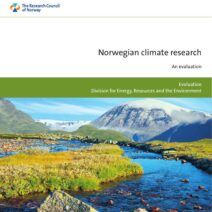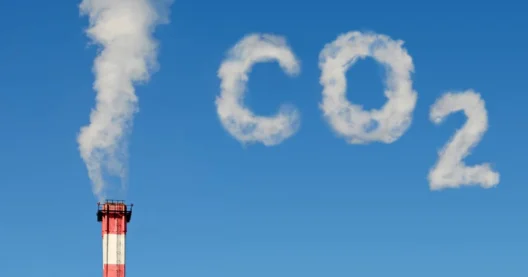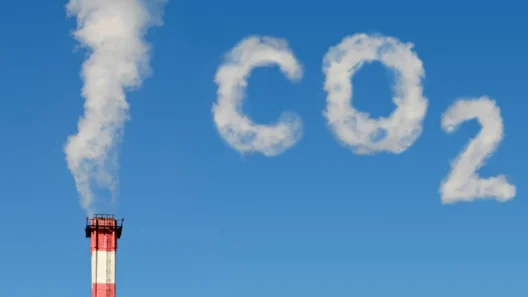Volcanoes are awe-inspiring natural phenomena that possess the capacity to alter not only landscapes but also global climate patterns. Eruptions can release an enormous amount of ash and gases into the atmosphere, resulting in various short-term and long-term climatic effects. Understanding this relationship between volcanic activity and weather patterns is essential for environmental science and climate adaptation strategies. This article delves into the intricate dynamics of volcanic eruptions and their consequential impact on weather and climate.
Understanding Volcanoes and Eruptions
Volcanic eruptions occur when there is a build-up of pressure beneath the Earth’s crust, usually due to the accumulation of magma. Different types of eruptions can be categorized based on their behavior, including effusive eruptions, which produce lava flows, and explosive eruptions, characterized by the violent expulsion of ash, gases, and pyroclastic materials. The scale of an eruption can vary significantly, influencing the intensity of its effects on the climate.
Types of Volcanic Eruptions
Eruptions can be broadly classified into four categories: Hawaiian, Strombolian, Vulcanian, and Plinian eruptions. Hawaiian eruptions are generally effusive, featuring gentle lava flows. Strombolian eruptions, on the other hand, are more explosive, ejecting lava blobs and gas into the atmosphere sporadically. Vulcanian eruptions involve moderate explosions that expel ash clouds, while Plinian eruptions are the most violent, characterized by largescale ejections of ash and gas, which can reach altitudes of 50 kilometers or more.
The Release of Ash and Gases
During an eruption, significant amounts of volcanic ash—tiny fragments of rock and mineral particles—are ejected into the atmosphere. This ash can travel thousands of miles, depending on wind patterns. In addition, eruptions release various gases, including water vapor, carbon dioxide, sulfur dioxide, and hydrogen sulfide. The composition and amount of these gases can profoundly affect atmospheric chemistry and, subsequently, weather patterns.
Immediate Weather Effects of Eruptions
In the immediate aftermath of a volcanic eruption, the weather can undergo rapid changes. Ash fallout can result in diminished sunlight reaching the Earth’s surface, leading to temporary cooling effects known as “volcanic winter.” This phenomenon can disrupt local weather systems, leading to altered precipitation patterns and temperature fluctuations. Furthermore, volcanic gases, particularly sulfur dioxide, can form sulfate aerosols in the stratosphere, enhancing cloud formation and influencing regional weather conditions.
Long-Term Climatic Consequences
The impact of volcanic eruptions is not confined to immediate weather changes. Prolonged climatic effects can linger for months or even years following a significant eruption. For instance, previous major eruptions, such as Mount Pinatubo in 1991, showcased the potential for volcanic activity to lead to global cooling. This occurred due to the extensive release of sulfate aerosols, which reflect sunlight and decrease temperatures across vast areas of the planet. Studies have shown that substantial eruptions can lead to a decrease in average global temperatures by 0.5 to 1.0 degrees Celsius over a period of one to two years.
Impact on Ecosystems and Agriculture
The repercussions of volcanic eruptions extend beyond mere temperature changes. Ecosystems can be significantly affected by alterations in climate, impacting biomes and biodiversity. Changes in weather could disrupt seasonal cycles critical to agricultural practices. Crops that rely on predictable weather patterns may suffer from anomalies, leading to reduced yields or crop failures. Understanding these dynamics is crucial for developing strategies to mitigate potential agricultural crises following eruptions.
Case Studies: Historical Volcanic Eruptions
Several historical eruptions have demonstrated the connection between volcanic activity and climactic shifts. The eruption of Mount Tambora in Indonesia in 1815 created what is known as the “Year Without a Summer” in 1816, leading to widespread agricultural failures across North America and Europe. Climate anomalies, including temperature destabilization and unusual snowfall, were documented during that time. The eruptions of Krakatoa in 1883 and Pinatubo in 1991 further illustrate the dramatic climatic impacts that volcanic eruptions can ensue, affecting weather patterns and triggering international climatic discussions.
Volcanic Monitoring and Climate Adaptation
Given the potential for widespread climatic disruption, continuous monitoring of volcanoes is essential. Advances in technology, including satellite imagery and ground-based sensors, have enhanced the ability of scientists to predict eruptions and assess their potential consequences on weather patterns. Proactive adaptation strategies, such as modifying agricultural practices and developing early warning systems, are vital in preparing for the inevitable impacts of volcanic eruptions on climate.
Conclusion
Volcanoes are formidable forces of nature that play a significant role in shaping both local and global climates. Their eruptions can result in complex interactions within the atmosphere, influencing weather and climatic patterns profoundly. By studying these phenomena, scientists can better understand the multifaceted relationship between natural disasters and environmental change, ultimately aiding in climate resilience and sustainable adaptation. The role of volcanoes in weather dynamics serves as a reminder of the interconnectedness of Earth’s systems and the importance of respecting and protecting our planet’s natural processes.





